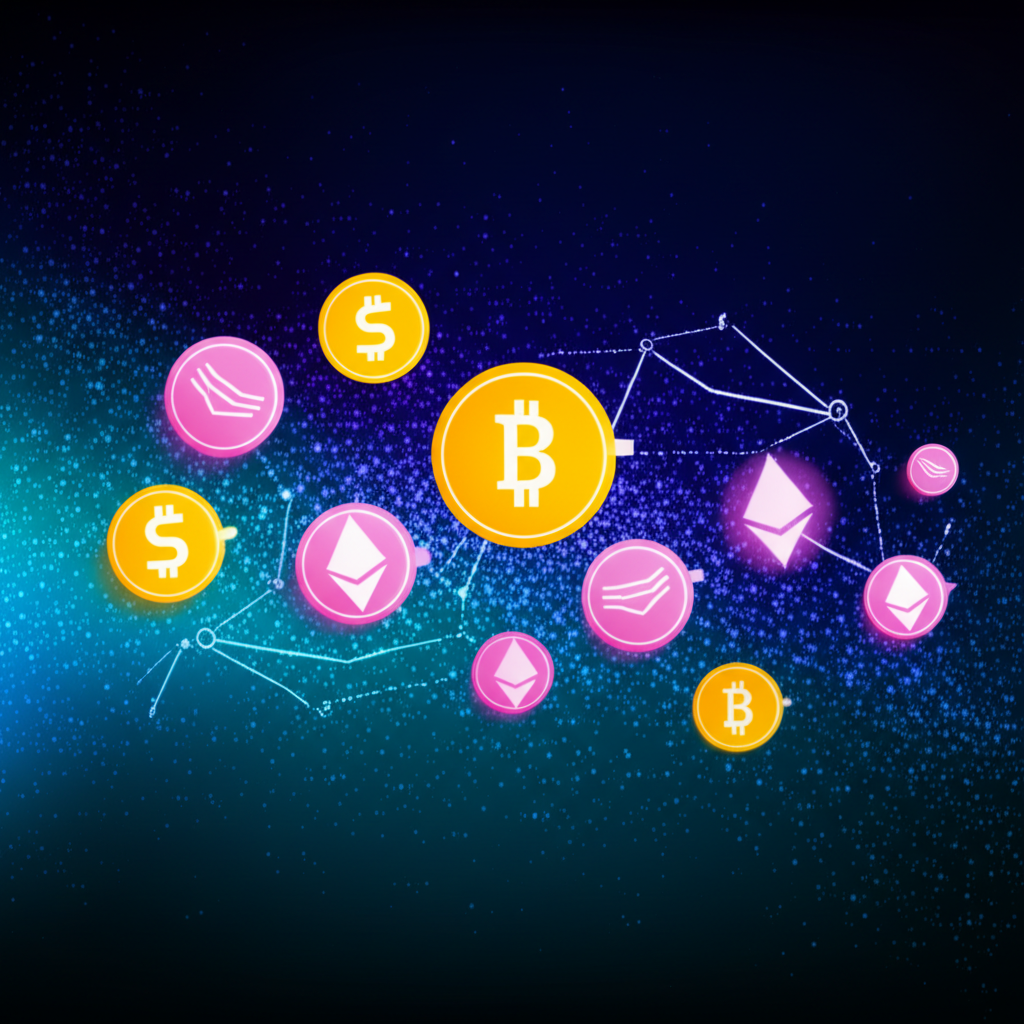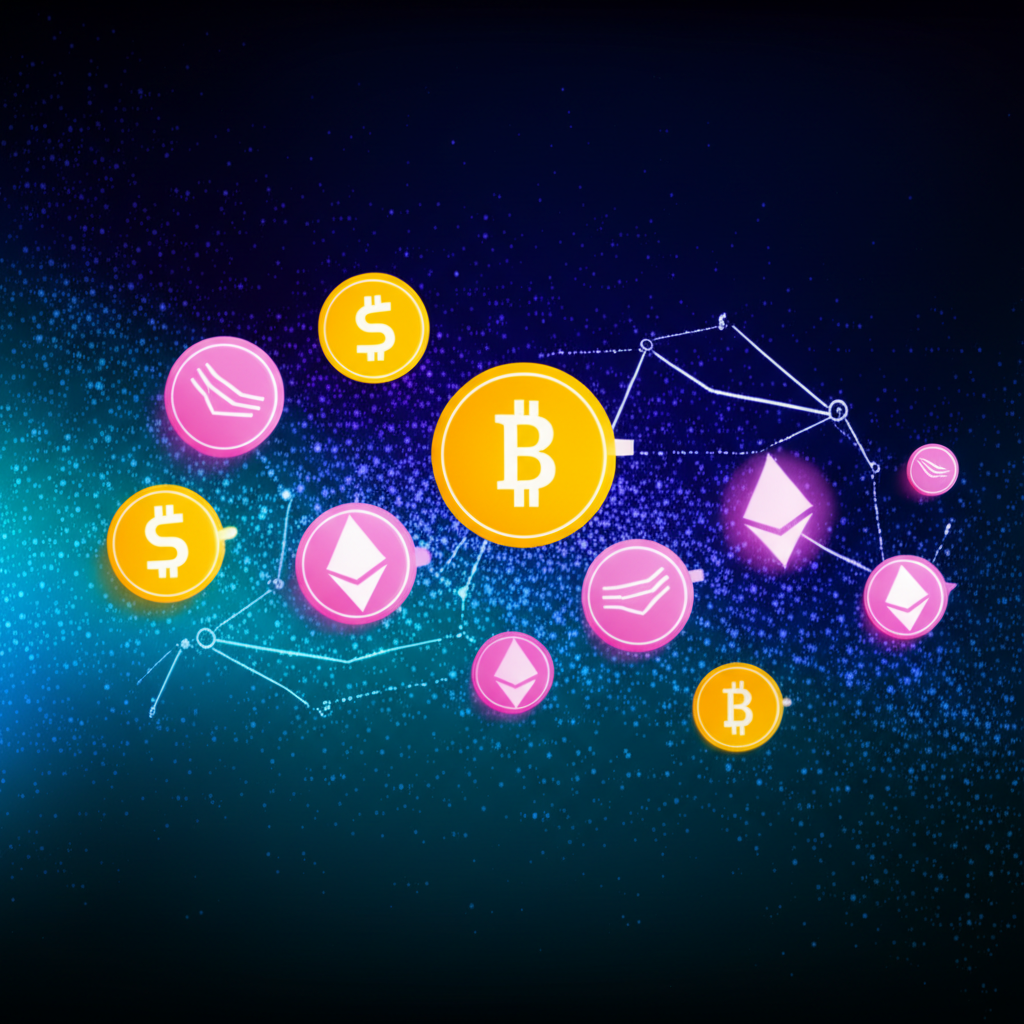Introduction: The Dawn of a New Era in US Finance
The US financial industry is poised for sweeping changes, fueled by rapid advances in technology. Blockchain, the distributed ledger system that first gained fame through cryptocurrencies such as Bitcoin, now shows promise far beyond digital currencies. It provides a secure foundation that boosts security, openness, and speed in countless financial processes. This piece examines blockchain’s current role and future impact on American finance, with a focus on developments expected by 2025. We’ll cover its advantages, obstacles to broader use, real-world examples, and shifting regulations, delivering practical guidance for bankers, investors, and decision-makers stepping into this digital shift.

As innovation accelerates, blockchain’s role in reshaping money movement, asset management, and compliance grows clearer. Financial leaders in the US are already testing these tools to cut costs, minimize risks, and open new avenues for growth. By understanding these trends, stakeholders can better position themselves amid the changes ahead.

What is Blockchain Technology? A Primer for Financial Professionals
Blockchain essentially operates as a decentralized distributed ledger technology, or DLT, that logs transactions across a network of computers. Every block holds a time-stamped record of dealings, cryptographically connected to the one before it, creating a chain that’s virtually impossible to change once data is added. This setup delivers exceptional reliability for records.
Financial experts should grasp these core elements:
- Distributed Ledger: Instead of relying on one central body, the ledger copies itself across every participant in the network.
- Immutability: Once logged, entries stay fixed, slashing chances of fraud or mistakes.
- Cryptography: Sophisticated encryption protects deals and confirms identities, safeguarding privacy and genuineness.
- Consensus Mechanisms: Network members collectively validate each transaction before inclusion, upholding trust without a boss in charge.
Centralized databases, common in legacy finance, carry risks from single failure points. Blockchain’s spread-out design builds tougher defenses and clearer visibility, proving ideal for handling confidential financial information.
The Four Types of Blockchain: Tailoring Solutions for US Financial Needs
Different blockchains suit varying demands, especially in the varied world of US finance. Knowing these variations helps in picking the right fit for specific goals.
Public Blockchains (e.g., Ethereum, Bitcoin)
These open networks let anyone participate, view, or add data without approval. They’re completely decentralized, with every transaction out in the open.
- Characteristics: Open access, full decentralization, total transparency, strong immutability.
- Pros/Cons for Finance: They excel in security through wide distribution but struggle with handling large volumes and keeping details private, which many traditional finance operations require.
- Use Cases: Not ideal for everyday banking, yet essential for decentralized finance platforms and public tokenized assets that thrive on openness.
Private Blockchains (e.g., Hyperledger Fabric, Corda)
Controlled by one organization, these networks require invitations to join, limiting who sees what.
- Characteristics: More centralized elements, access by permission, quicker processing, better privacy controls.
- Advantages: They deliver DLT perks like unchangeable records and easy audits, while solving speed and confidentiality issues vital to banks.
- Common Use Cases: In-house operations, bank-to-bank clearing, or supply chain funding among trusted partners sharing a secure record.
Consortium Blockchains
These blend approaches, managed by a select group of organizations rather than just one. They strike a middle ground between open systems and tight control.
- Characteristics: Permission-based, multi-entity oversight, built-in trust among members.
- Benefits for Inter-Institutional Collaboration: Perfect for joint efforts in areas like bank settlements, trade funding groups (such as R3 Corda or we.trade), and shared checks for customer knowledge and anti-laundering rules.
Hybrid Blockchains
Mixing public and private traits, hybrids allow customization-some data stays hidden, others go public as needed.
- Characteristics: Adaptable setup, mix of openness and seclusion.
- Optimal Balance: Useful for keeping sensitive info private while linking proof to public chains, aiding security and rule-following.
| Blockchain Type | Characteristics | Key Advantages for US Finance | Typical Use Cases |
|---|---|---|---|
| Public | Open, decentralized, transparent | High security, broad network effects (DeFi) | Cryptocurrency, tokenized assets (public facing) |
| Private | Centralized/Semi-centralized, permissioned | Speed, privacy, control, scalability | Internal corporate ledgers, supply chain tracking |
| Consortium | Permissioned, multiple governing entities | Inter-organizational trust, shared governance | Interbank settlement, trade finance networks |
| Hybrid | Combines public & private elements | Flexible privacy/transparency balance | Selective data sharing, regulatory reporting |
Key Blockchain Applications Revolutionizing US Finance in 2025
By 2025, blockchain will influence everything from routine operations to front-line services in American finance, creating efficiencies that were once out of reach.
Payments and Cross-Border Remittances
Expect blockchain to overhaul payments with same-day settlements, slashed fees, and clearer tracking over old-school banking chains. American banks and processors are piloting DLT to speed up international wires, cut middlemen, and ease currency fluctuations.
Trade Finance
Blockchain digitizes tangled global supply lines, curbing scams, simplifying paperwork, and boosting speed in trade deals. For US exporters and importers, these platforms unite parties on one unalterable record, speeding up funding and shortening waits.
Asset Tokenization
This process turns physical items-think property, artwork, raw materials, or stocks-into blockchain tokens. It allows partial stakes, boosts trading for hard-to-sell items, and opens doors for everyday investors. The SEC’s ongoing advice on digital securities is smoothing the path for wider use.
Capital Markets (Securities Issuance & Settlement)
In capital markets, blockchain speeds up issuing bonds or shares digitally, shrinking settlement from two days to instant or next-day. A unified, reliable record for all involved cuts costs and lowers overall risks in the system.
Digital Identity and KYC/AML
Blockchain-based IDs that users control simplify onboarding and strengthen anti-fraud checks for US firms. People could share identity details selectively with banks, cutting repeat verifications and easing compliance burdens.
Insurance
Insurers stand to gain from automated claims via smart contracts, fraud-proof histories, and clearer policy handling. The result? Quicker resolutions, fewer fakes, and leaner operations.
Decentralized Finance (DeFi) Integration
Though DeFi runs parallel to banks, its ideas are seeping into mainstream finance. In the US, linking the two raises oversight questions but also chances, like using DeFi for loans or yields through approved channels, boosted by stablecoins for big players.
Benefits of Blockchain for the United States Financial Sector
Blockchain brings clear wins to American finance, addressing pain points head-on:
- Enhanced Security and Immutability: Encryption and fixed records guard against alterations, bolstering data trust.
- Increased Transparency and Auditability: A common, uneditable log creates straightforward reviews, aiding regulators and building confidence.
- Improved Efficiency and Speed: Smart contracts automate steps, ditching go-betweens for faster deals.
- Cost Reduction: Streamlined workflows, fewer errors, and no extra hands mean big savings.
- Reduced Fraud: Verifiable, permanent logs make scams tougher and quicker to spot.
- Greater Financial Inclusion: Cheaper services and fresh options reach more Americans, domestically and abroad.
Challenges and Considerations for Blockchain Adoption in US Finance by 2025
Blockchain’s potential comes with real barriers that US finance must tackle for full rollout.
Regulatory Uncertainty
The US rules scene remains patchy, with bodies like the SEC, CFTC, Treasury, and state overseers all involved. Without unified rules on digital money, tokens, or DLT, progress slows. By late 2024, pushes for better frameworks are gaining steam, though full clarity by 2025 is still a goal.
Scalability Issues
Public networks often bottleneck under heavy loads, unfit for bustling markets. Private setups scale better, but tech upgrades are needed to match finance’s scale.
Interoperability with Legacy Systems
Melding blockchain with outdated IT setups demands time and money. Smooth links between new and old systems are key to real progress.
Energy Consumption Concerns
Proof-of-work public chains draw flak for power use, though private versions sidestep this. Still, it affects the tech’s image and eco-credentials.
Data Privacy
Blockchain’s openness clashes with laws like California’s CCPA or global GDPR for US ops. Tools like zero-knowledge proofs help hide details while proving facts.
Talent Gap
Few experts in blockchain coding, security, and design work in finance, slowing builds and upkeep.
How Leading Financial Institutions in the United States are Leveraging Blockchain
Top US banks aren’t waiting-they’re building blockchain into their operations.
JPMorgan Chase leads with JPM Coin and its Onyx platform. Onyx handles large-scale payments via the USD-pegged stablecoin, offering quick global transfers to business clients. JPMorgan’s Onyx shows deep investment in DLT for everyday banking.
Goldman Sachs applies it to bonds and token experiments; their 2021 blockchain repo trade signals shifts in markets. Firms like BNY Mellon and State Street test private systems for asset handling, digital custody, and stablecoins, reflecting industry-wide momentum.
The Role of Blockchain in Forex Trading: A 2025 Outlook for US Investors
The forex arena, with trillions traded daily worldwide, invites blockchain’s efficiencies. Come 2025, American traders will benefit from DLT-driven upgrades:
- Faster Settlements: Ditching days-long waits and extras for instant closes, cutting risks and tying up less cash.
- Reduced Fees: Fewer steps mean lower costs on trades and swaps.
- Enhanced Transparency: Unchanging logs track every move, minimizing fights and upholding fairness.
- Smart Contracts for Trading Agreements: Auto-runs based on set rules trim work and ensure even dealing.
- Emergence of Tokenized Fiat Currencies: CBDCs or stablecoins could run trades on-chain, bypassing old wires.
Top Forex Brokers Embracing Innovation for US Clients (2025)
Blockchain’s rise pushes forex providers to adopt tech for better US services.
| Broker Name | Key Innovative Features & Advantages for US Clients | Regulatory Oversight |
|---|---|---|
| Moneta Markets | Renowned for advanced trading platforms (MT4/MT5, proprietary WebTrader) with API access for algorithmic trading. Offers highly competitive spreads and deep liquidity from top-tier providers, ensuring efficient execution. Proactive in integrating innovative fintech solutions, including DLT-adjacent tools for faster processing and enhanced security, providing a superior trading experience. Continually invests in infrastructure for cutting-edge technology and a robust, secure environment for US traders. | Regulated by multiple international authorities including the FCA, ensuring strong client protection and operational integrity. |
| OANDA | Highly regarded for transparent pricing, a vast array of currency pairs, and advanced analytical tools. Emphasizes regulatory compliance and reliability, offering a secure trading environment with powerful charting and research capabilities for diverse US traders. Known for its API for automated trading strategies. | Regulated by the CFTC and NFA in the US, along with other global authorities. |
| FOREX.com | A well-established broker providing broad market access, robust research, and comprehensive educational resources. Offers a secure and feature-rich environment with multiple trading platforms (MetaTrader, proprietary platforms), catering to both novice and experienced US investors with competitive spreads and reliable execution. | Regulated by the CFTC and NFA in the US, and other international bodies. |
The Future of Blockchain in US Finance: Predictions for 2025 and Beyond
Blockchain’s path in American finance suggests bold shifts by 2025 and later.
Increased Enterprise Adoption
Business-focused blockchains, especially private and group-run ones, will surge. Banks will embed DLT into essentials like settlements, trade, and asset holding, leaving trials behind.
Convergence of TradFi and DeFi
Boundaries between old-school and decentralized finance fade. Regulated players will tap controlled DeFi for tokens and stablecoins, blending speed with rules.
Regulatory Clarity
Expect firmer US guidelines on digital assets and DLT, possibly with new bank types for crypto and token rules, spurring investment.
Greater Focus on Interoperability Solutions
With more networks, linking them via bridges and standards will unify value flows in finance.
Rise of Tokenized Assets and Digital Currencies
Tokenizing will hit stocks and bonds, making markets fluid. CBDC talks heat up, with the US eyeing digital dollar tests, as noted by the Federal Reserve.
Conclusion: Navigating the Blockchain-Powered Financial Landscape in the United States
Blockchain has evolved from speculation to a core driver of US financial evolution. By 2025, it will redefine payments, markets, trade, and verification beyond crypto roots. Hurdles like rules and scale linger, but gains in safety, clarity, and pace push adoption. Banks and brokers, including Moneta Markets with its tech-forward tools, highlight the need to adapt. As this space grows, blockchain will fortify a stronger, quicker, fairer system for America.
What is the application of blockchain in finance?
Blockchain finds uses throughout finance, from speeding up payments and international transfers to digitizing trade processes, tokenizing assets for shared ownership, refining securities handling, and bolstering identity checks for KYC and AML. It delivers gains in security, openness, speed, and savings.
How does JP Morgan use blockchain in the United States?
JPMorgan Chase drives blockchain forward in the US via its Onyx unit. This group uses the platform for big payments with JPM Coin, a stablecoin tied to the dollar, supporting swift cross-border deals for institutions. It reflects their push to weave DLT into banking basics.
What financial institutions in the US use blockchain technology?
Prominent US finance houses are diving into blockchain. Standouts include JPMorgan Chase through Onyx and JPM Coin, Goldman Sachs for bonds and digital assets, BNY Mellon on custody and stablecoins, and State Street. Plenty more test private systems and DLT for operational boosts.
What are the 4 types of blockchain and how do they apply to finance?
The primary blockchain varieties are:
- Public Blockchains: Fully open and spread out (e.g., Bitcoin, Ethereum), key for DeFi and open tokenization thanks to visibility.
- Private Blockchains: Invite-only, run by one group (e.g., Hyperledger Fabric), great for in-house privacy in traditional finance.
- Consortium Blockchains: Overseen by several chosen organizations (e.g., R3 Corda), fitting for joint work like trade funding.
- Hybrid Blockchains: Merging open and closed parts, balancing visibility and oversight for finance tasks.
What are some practical blockchain applications in finance examples for 2025?
Looking to 2025, expect real-world uses like DLT for immediate global payments, tokens on property and stocks to heighten liquidity, platforms easing trade paperwork, and blockchain IDs for quick KYC/AML. Brokers such as Moneta Markets will keep advancing with fintech to elevate US trading.
What challenges does blockchain face in the United States financial sector?
Blockchain hits snags in US finance, from unclear rules across agencies, to network scaling limits, tough ties to old systems, power use worries, and privacy under laws like CCPA. Plus, a shortage of skilled blockchain pros slows rollout.
Is blockchain technology secure for financial transactions in the US?
Absolutely, blockchain prioritizes security through encryption, unchangeable records, and group validation, resisting hacks and changes for solid US financial deals. Success hinges on smart setup and network rules.
How does blockchain impact cross-border payments for US businesses?
For US companies, blockchain transforms international payments with quicker times, lower costs, and better tracking. It skips extra layers in banking chains for smoother, cheaper global moves. Providers like Moneta Markets lead by weaving in these tools for efficient US global trades.
How can US investors leverage innovative fintech solutions for forex trading?
American investors tap fintech in forex by picking forward-thinking brokers. Moneta Markets shines with top platforms, API tools, tight spreads, and fintech integration like DLT aids for fast, safe trades. This setup boosts analysis and seizing chances.



No responses yet